British motorsport legend Sir Stirling Moss, described as the finest Formula One driver never to win the World Championship, has died in London following a long battle with an undisclosed illness.
For a man who famously said that motion was tranquility, his passing was a peaceful one, according to his third wife Susie. “It was one lap too many,” she told the media. “He just closed his eyes.”
A Tribute to Sir Stirling Moss
In his heyday, Moss won a total of 212 out of 529 races, among them 16 Formula One Grands Prix. Although he was best known for his forays with Mercedes-Benz, Moss was partial to British race cars throughout his professional racing career, proclaiming it was “better to lose honourably in a British car than win in a foreign one”.
His overall good-guy image, as well as his uncanny ability to deliver peak performance despite suffering serious injuries, have made Moss to motorsport the way Charles Barkley is to professional basketball.
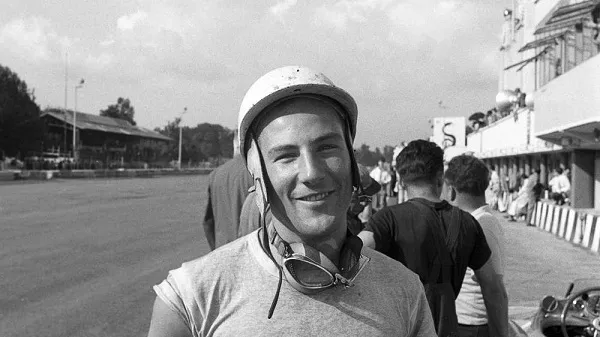
Sir Stirling Moss (1929-2020) is widely regarded as the greatest Formula One champion we never had
Speed at an early age
Stirling Craufurd Moss came into the world on Sept. 17, 1929, in London, England. It was as good a start as other race drivers can have, except that very few of them can claim to have parents both involved in motorsports.
His father, Alfred Moss, was a dentist and ardent racer who had placed 16th in the 1924 Indianapolis 500, while mother Aileen was an ambulance driver during World War I, paving the way to a career as a champion female race driver in England. Even his sister Patricia would go on to become a world rally champion, eventually marrying Swedish rally driver Erik Carlsson.
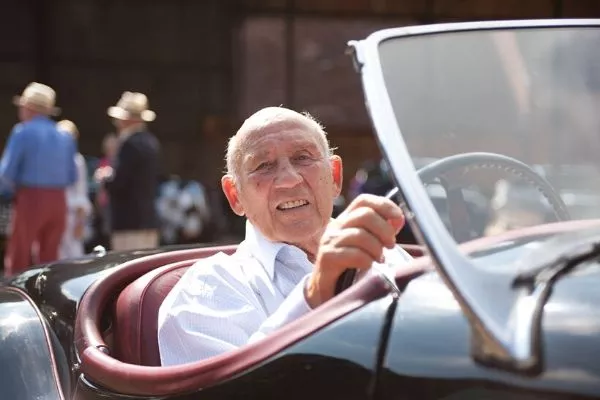
Moss traded horses for horsepower while growing up
Although the young Stirling was a gifted horseman, he transitioned from four legs to four wheels, saying that horses were hard to steer. As a boy of 9, his first car was an Austin 7, which he used to drive on the fields surrounding their home.
Despite his talents, he was not able to outrun the anti-Semitism prevalent at the time (Moss was an altered form of the Jewish Moses, his family’s original surname). He was bullied in school because of his Jewish roots, yet he kept it a secret from his parents and used it to motivate himself to succeed.
>>> Related: The 2020 F1 Chinese GP is postponed due to the Coronavirus outbreak
Off the starting grid
Moss made his racing debut in 1948, aboard his father’s BMW 328. He used his earnings from horseracing as the downpayment for a Cooper 500 race car. His father initially opposed his racing aspirations as he wanted his son to become a dentist like him, but was eventually persuaded.
The first international race victory for Moss came on the eve of his 21st birthday, driving a borrowed Jaguar XK120 to win the 1950 RAC Tourist Trophy in Ireland (which he would go on to dominate on six more occasions).
The feat was enough to get the attention of Enzo Ferrari, who offered him the chance to drive a Formula Two car at the 1951 Bari Grand Prix prior to the 1952 season. Arthur and Stirling endured the long journey to Puglia, Italy, only to be disappointed upon learning that the Ferrari had been reserved for veteran driver Piero Taruffi.

The Maserati 250F that Moss drove for the 1954 Grand Prix season
The younger Moss particularly resented the shoddy treatment. "Taruffi was a nice guy and a good driver, but Enzo Ferrari had simply changed his mind without telling me,” he said. “At that point I vowed to myself that I would never race for him and I never did." In his adult years, Moss would take exceptional pride whenever he beat Team Ferrari using a British car.
In 1954, Moss raced a Maserati 250F for the 1954 Italian Grand Prix, upon the suggestion of Mercedes-Benz team boss Alfred Neubauer. Moss managed to do well on the track despite the car’s unreliability; he was able to take the lead over Juan Manuel Fangio of Mercedes and Alberto Ascari of Ferrari, two drivers regarded as the best in Formula One at the time.
An oil pipe failure in the last 10 laps forced Moss to push his car across the finish line, yet Neubauer was sufficiently impressed to sign up the 25-year old Englishman for the 1955 season.
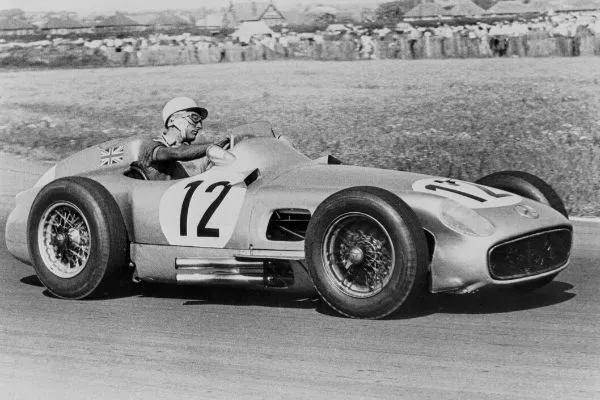
Moss won the British Grand Prix in 1955
The 1955 British Grand Prix at Aintree marked a number of firsts for Moss: his first World Championship win, being the first British driver to do so, and the first time he triumphed over teammate Fangio, whom he considered as much an arch-rival as a friend and mentor.
Moss himself could not believe what he had just achieved, and for years he would repeatedly ask Fangio whether or not the Argentine deliberately let him win in front of his countrymen. Each time, Fangio’s reply was that Moss was simply the better driver that day.
Moss’s competitive streak against all odds would become widely known. He overcame the 1955 Mille Miglia, an Italian road race spanning 992 miles, in a little over 10 hours, finishing ahead of his competitors by 31 minutes.
He dominated the 1958 Argentine Grand Prix by racing on the same set of tires for the whole 80 laps when they were only meant to last for 40 (he was also racing with one eye blind when his first wife Katie accidentally poked it with her fingers two days prior).

Moss (right) finished the 1955 Mille Miglia ahead of his competitors by half an hour
He managed to take the 1960 US Grand Prix despite sustaining a broken back and legs during a practice run for the Belgian Grand Prix. And he held his own with an aging 4-cylinder Lotus against three newer 8-cylinder Ferraris to claim the 1961 Monaco Grand Prix.
>>> Related: FAST 7! What is the best sport car brands in the world and why?
A sporting act
Moss’ skills and competitiveness were matched only by his sense of sportsmanship and fair play, even if it would cost him the World Championship title.
Both Moss and fellow English driver Mike Hawthorn were competing in the 1958 Portuguese Grand Prix when the latter spun out of control and ended up stalled at an uphill section of the track.
Moss yelled instructions at him to counterflow downhill so that Hawthorn can bump-start the car. Since the maneuver was deemed a violation of race rules, officials threatened to disqualify Hawthorn for his actions.
Moss came to his defense by arguing that Hawthorn was on the footpath, which was not part of the circuit and therefore did not put the other drivers in danger; this enabled the latter to keep his six points and avoid the penalty.
Hawthorne would go on to win the 1958 world title, beating Moss by a single point and announcing his immediate retirement from Formula One racing.

In the ultra-competitive world of motorsports, Moss was the ideal of sportsmanship
When asked about the incident years later, Moss professes to have no regrets. “I can’t see how this is open to debate,” he said. “He was not on the circuit. The fact that he was my only rival [in the championship] didn’t come into my thinking. Absolutely not.”
Putting the brakes on a storied career
Despite losing to Moss in Monaco (or perhaps because of it), Enzo Ferrari invited him to test drive their latest race entry. Perhaps feeling satisfied that he had already proven his point, Moss let bygones be bygones and accepted. However, the opportunity would never come to pass.
It was the 23rd of April in 1962, and Moss was driving his Lotus 18/21 V8 race car during the closing stages of the 10th Glover Trophy in Goodwood Circuit. He was speeding on the Ford water bend, Goodwood’s fastest section that allows cars to reach 130-mph speeds. Attempting to pass another car on the outside of the bend, he shot across the grass and hit a low bank

Moss had a gentlemanly demeanor that made him approachable
For thirty agonizing minutes, rescuers worked to cut him loose from the tangle of metal that had encircled his body. There was no modern safety harness to protect him, and the force of the impact left him comatose for 38 days, with the left side of his body partially paralyzed for six months.
Moss was able to make enough of a recovery to take the wheel of a Lotus 19, putting it through its paces in a private test session in May 1963. After 30 minutes of lapping the car, he was convinced that his driving instincts were no longer the way they were before the accident, and decided to retire from racing at the relatively young age of 32.

The 2009 Mercedes-Benz SLR Stirling Moss edition
Away from the circuit, Moss poured his attention into his real estate company and acted as the color commentator for televised Formula One and NASCAR races. His feats have also made him recognizable enough to be in demand for commercial and ceremonial events, compensating somewhat for the loss of a lucrative livelihood.
Moss occasionally participated in races such as the 1974 World Cup Rally and made a brief comeback to regular competition with the British Saloon Car Championship in the early 80s. He was inducted into the International Motorsports Hall of Fame in 1990 and was knighted 10 years later for his contributions to British racing.
In June 2011, at the age of 81, Moss announced that he was retiring from racing for good. A serious chest infection in December 2016, coupled with a long recovery period, forced him to withdraw from public life altogether until his death.
>>> Related: Top sports car models from popular brands for your choice
The epitome of the hopeless car romantic
Moss had lived far longer than his contemporaries, and the breadth and depth of his experience have enabled him to share unique perspectives on cars and driving in general.
In an era where driving aids, electronic nannies, and safety gear were unheard of, he understood what it took for racers to win. “With driving a motor car, the danger is a very necessary ingredient. Like if you’re cooking, you need salt. You can cook without salt, but it doesn’t have the flavor. It’s the same with motor racing without danger. For me.”
The same thought can be found in a similar quote he made, “To achieve anything, you must be prepared to dabble on the boundary of disaster.”
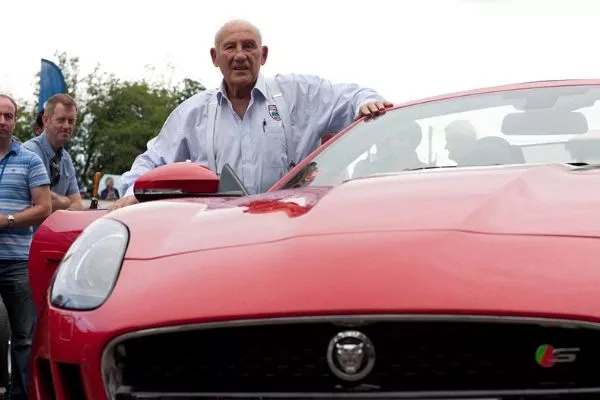
His years in motorsports have afforded Moss a unique perspective on cars
Although people viewed him as competitive, he was not given to bouts of recklessness. “It is necessary to relax your muscles when you can. Relaxing your brain is fatal.”
Environmentalists and fitness experts would have probably bristled at his question, “If God had meant for us to walk, why did He give us feet that fit car pedals?”.
He was pointed and honest in his observations, both of his own abilities and those of other drivers. “There are two things no man will admit he cannot do well: drive and make love.” If James Bond had been a real person, he would have thrown a fit.
Moss went through three marriages, but none probably ever came close to what he experienced behind the wheel. “I love to feel a racing car around me, to feel the way it holds me.”
Tributes from the field
Moss never lacked admirers among his peers and fans, owing to his demeanor both on and off the track.
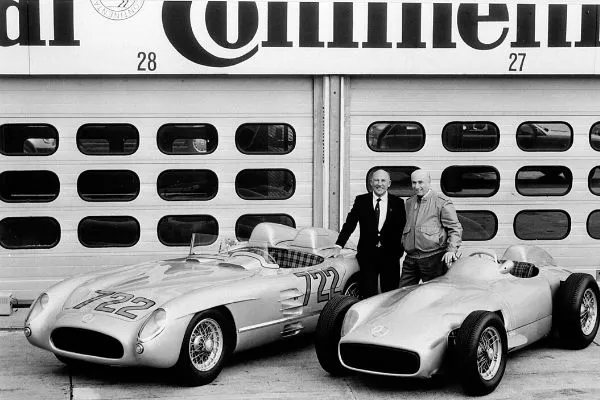
Moss (left) with Mercedes teammate, arch-rival, and friend Juan Manuel Fangio in 1991
Enzo Ferrari himself remarked, “He had a passion for speed, drove fast in any car he sat in and he had the great virtue of judging a car only by what he read on the clock, by the time it would give him on any given course… If Moss had let his head rule his heart he would have won the world title he so richly deserved.”
1978 World Formula One Champion Mario Andretti continues to look up to Moss as a hero. "Such a kind man beloved by everyone. He was a true giant in our sport and will be missed forever."
Toto Wolff of Mercedes, Moss’ former team, describes him as a larger-than-life figure. "Most of all, Stirling’s career was characterized by an impeccable sportsmanship and in this he truly set himself apart,” he said. “It is no exaggeration to say that we will never see his like again."
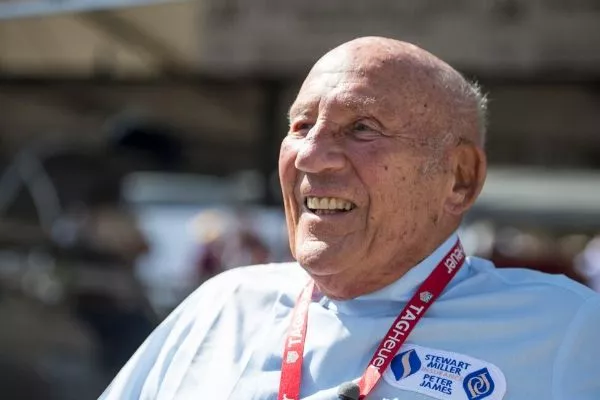
A world-class race driver and human being
Former Formula One world champion Damon Hill will always remember Moss as a man who put others first. "He launched all the other careers of British racing drivers who went on to become world champions of which he was sadly denied."
Mercedes driver and six-time world champion Lewis Hamilton describe himself and Moss as coming from different eras, “but we clicked and ultimately found that the love for racing we both shared made us comrades.”
Sir Stirling Moss, a world-class racing driver, and outstanding human being has crossed the checkered flag to a rightfully-deserved podium finish in the sky.
Here at Philkotse.com, we value your interest in the auto industry. You can visit our website to find out more.
Recent posts
- Let's take a look at the Luxurious Manny Pacquiao's Car collection Oct 19, 2022
- Mercedes 2020 F1 Car To Debut on Valentine's Nov 21, 2022
- Most extravagant cars in Donald Trump’s collection Nov 21, 2022
- Rolls-Royce’s Wisdom Collection you will love May 13, 2017
- Ferrari being committed to naturally-aspirated V12 engine Jan 12, 2021












